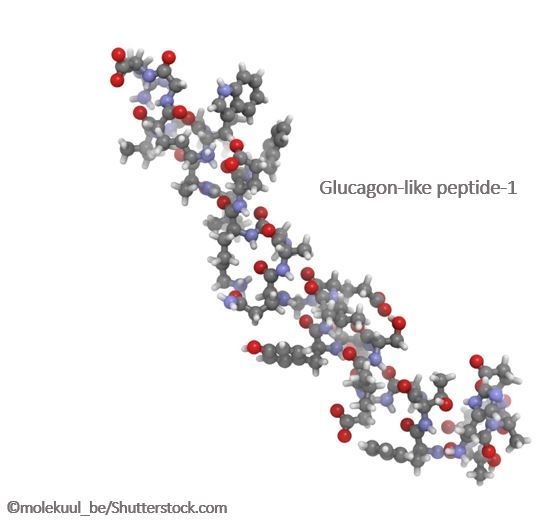Study: GLP-1 Receptor Agonist Therapy Reduces Asthma Exacerbations in Adults with Asthma, T2D
In adults with asthma and type 2 diabetes (T2D), use of glucagon-like peptide-1 receptor agonists (GLP-1 RA) for diabetes therapy was associated with fewer asthma exacerbations compared to other drugs for diabetes treatment intensification, found a new study published in the American Journal of Respiratory and Critical Care Medicine.

“Adult patients with asthma prescribed GLP-1R agonists for type 2 diabetes had lower counts of asthma exacerbations compared with other drugs initiated for treatment intensification. GLP-1R agonists may represent a novel treatment for asthma associated with metabolic dysfunction,” wrote authors led by Katherine N. Cahill, MD, medical director of clinical asthma research, division of allergy, pulmonary, and critical care medicine, Vanderbilt University Medical Center, Nashville, Tennessee.
In preclinical models, GLP-1 RAs have been shown to reduce allergic airway inflammation and viral-induced airway inflammation, but the impact of GLP-1 RA use on asthma exacerbations and symptoms in humans has not been examined, according to study authors.
For this reason, researchers aimed to compare rates of asthma exacerbations and symptoms between adults with T2D and asthma who were newly prescribed GLP-1 RAs or sodium–glucose cotransporter-2 (SGLT-2) inhibitors, dipeptidyl peptidase-4 (DPP-4) inhibitors, sulfonylureas, or basal insulin for diabetes treatment intensification.
Researchers used electronic health records to identify 5940 participants who were newly prescribed GLP-1R agonists or one of the 4 comparator drugs from January 2000 to March 2018.
The primary outcome was number of asthma exacerbations and the secondary outcome was health care encounters for asthma symptoms.
In the cohort:
- 448 patients (mean age=54 years; 72.1% women) initiated GLP-1 RAs;
- 112 patients (mean age=60 years; 58.9% women) initiated SGLT-2 inhibitors;
- 435 patients (mean age=63.5 years; 65.7% women) initiated DDP-4 inhibitors;
- 2253 patients (mean age=59.5 years; 61.6% women) imitated sulfonylureas; and
- 2692 patients (mean age=58.4 years; 65% women) initiated basal insulin.
The results showed that at 6 months, participants who initiated GLP-1 RAs had lower asthma exacerbation counts, compared with those who initiated SGLT-2 inhibitors (incidence rate ratio [IRR], 2.98; 95% confidence interval [CI], 1.3-6.8), DPP-4 inhibitors (IRR, 2.45; 95% CI, 1.54-3.89), sulfonylureas (IRR, 1.83; 95% CI, 1.2–2.77), and basal insulin (IRR, 2.58; 95% CI, 1.72–3.88).
Also, researchers observed lower health care encounters for asthma symptoms among GLP-1 RA users.
The results remained significant after the researchers accounted for changes in glycemic control and weight loss, according to study authors.
More research is needed to validate these findings, they concluded.
“Prospective human studies to validate these findings and to understand the mechanism(s) of the GLP-1R in the airway are needed to support the clinical selection of GLP-1R agonists for patients with asthma with and without comorbid metabolic dysfunction,” wrote authors.